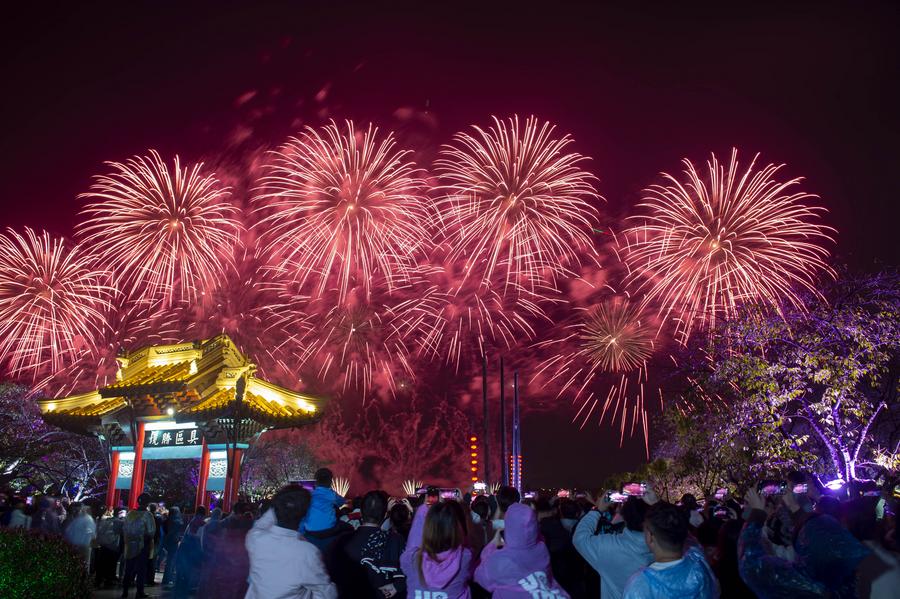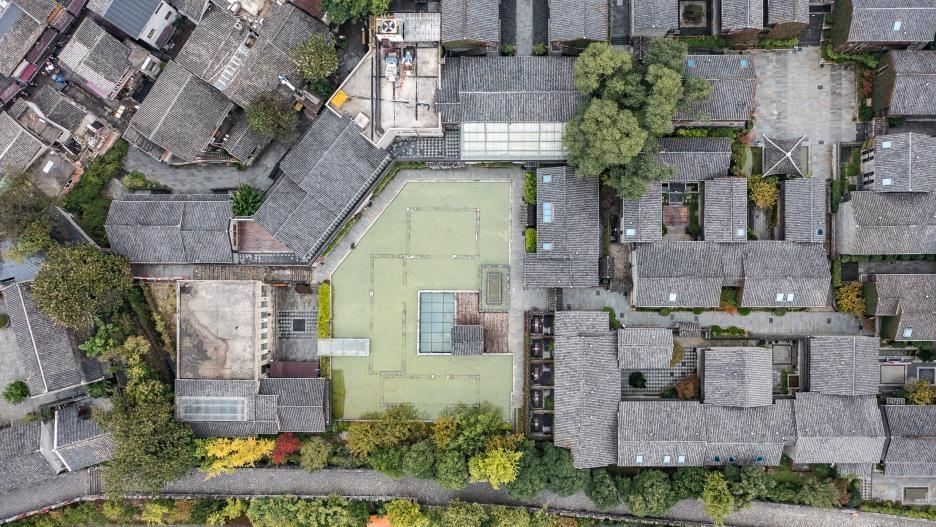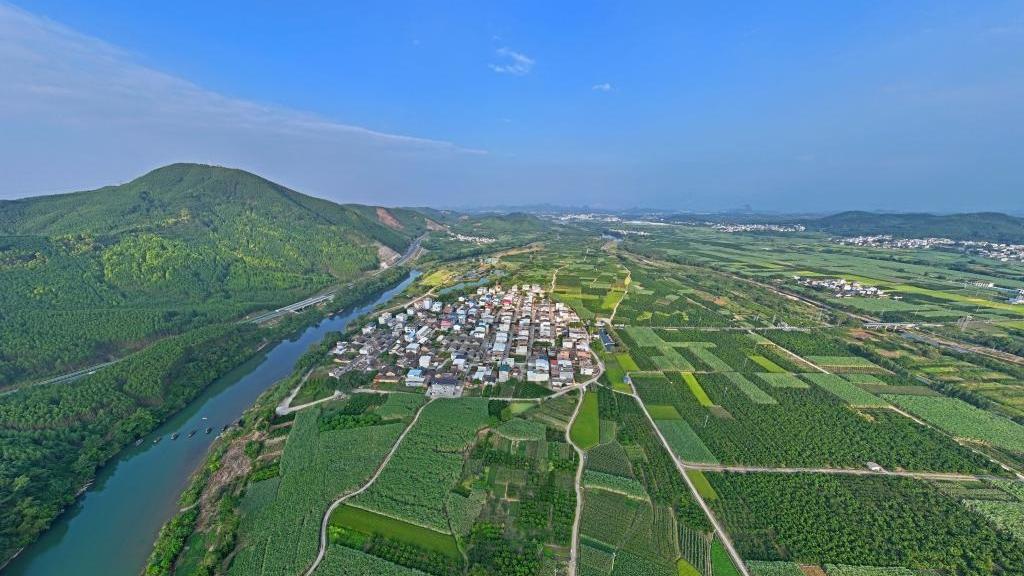China's tourist gems shine brighter through latest upgrades

An aerial drone photo taken on June 6, 2024 shows a view of the Tengwang Pavilion in Nanchang City of China's Jiangxi Province. (Xinhua/Zhou Mi)
BEIJING, Oct. 17 (Xinhua) -- If seventh-century Chinese literary prodigy Wang Bo were alive today, he would likely be proud to see his legacy still celebrated by modern youth -- not only in classrooms, but also at a tourist attraction like the Tengwang Pavilion which once inspired one of his greatest works.
The Pavilion, the 29th iteration in its 1,400-year history, features intricately carved beams and vibrantly painted rafters. It stands majestically along the banks of the Gan River, which winds through eastern China's Jiangxi Province.
As part of the efforts to showcase the traditional culture associated with the heritage, the management of the pavilion grants free entry to tourists who can recite Wang's classic essay featuring the beautiful lines -- "The sunset clouds and a lonely bird fly together; The autumn water blends with the endless blue sky."
According to statistics, approximately 40,000 tourists have been exempted from ticket fees since the policy was introduced in September 2021. The standard admission for adults is 50 yuan (about 7 U.S. dollars).
The pavilion epitomizes a broader trend in China to integrate culture with tourism more closely. From 2013 to 2022, the number of traditional cultural attractions in China nearly doubled, rising from 2,230 to almost 4,000.
Across the country, a comprehensive upgrade of the tourist attractions is underway to diversify tourism products, incorporate more elements of traditional culture, and improve management and services with smart technologies.
MORE TECHNOLOGIES
Tourism providers at Luzhi, a 2,500-year-old town in Suzhou in east China's Jiangsu Province, introduced an immersive digital tour in late April to recreate the town's vibrant nightlife from ancient times.
In the following four months, the average monthly traffic grew by more than 30 percent, with young people accounting for over 60 percent of the visitors, said Wang Liejun, from the management team of the tour program.
More importantly, tourist spending has shifted from street snacks to accommodation, creative cultural products and interactive performances, Wang added.
Luzhi is one of many historical towns in the Yangtze River Delta, which are innovating to captivate visitors and enhance their competitiveness. They have been traditionally known for their traditional stone bridges, winding streams and black-tiled, white-walled residences.
Dai Bin, president of the China Tourism Academy, said that mass tourism in China has entered a new phase, one that demands more than just beautiful scenery. This shift requires that tourist attractions focus on offering experiences that emphasize enjoyment and immersion.
Official data showed that 765 million domestic trips were made during the recent National Day holiday, up 5.9 percent year on year, with total tourist spending rising 6.3 percent to 700.8 billion yuan.

Tourists watch a firework show at the Yuantouzhu scenic spot of the Taihu Lake in Wuxi, east China's Jiangsu Province, Oct. 5, 2024. (Photo by Pan Zhengguang/Xinhua)
BETTER SERVICES
With the accelerated recovery of inbound tourism, authorities have introduced a raft of measures to make it more convenient for international tourists to travel in China.
Foreign tourists can purchase tickets from special vending machines which support multilingual services and multiple payment methods at popular tourist attractions, including the Badaling section of the Great Wall and the Emperor Qinshihuang's Mausoleum Site Museum.
In addition, more point-of-sale machines accepting foreign bank cards have been installed at these attractions this year to better accommodate overseas visitors.
Other upgrades to tourism services include a more convenient reservation process, smoother transportation to scenic spots and enhanced infrastructure at these sites.
Daily inbound trips saw a substantial increase of nearly 80 percent during the week-long National Day holiday, while over 50 percent of foreign tourists stayed in China for more than seven days, according to Ctrip, a leading Chinese online travel agency.
The China Tourism Academy predicts that foreign arrivals in the second half of this year will exceed 15 million, with the inbound tourism market expected to return to 2019 level, marking the start of a new growth cycle.
The Ministry of Culture and Tourism has pledged efforts to boost innovation, improve services, and promote integrated development and upgrades in the country's tourist attractions.
"We will build tourist attractions into an active vehicle of cultural confidence, a vigorous scene demonstrating better lives, a space to put ecological civilization into practice, and an effective driver for economic development," said the ministry.
Photos
Related Stories
- Rural sports, cultural activities boost tourism in SW China's Guizhou
- China's first cross-border tourism cooperation zone operational
- Rural tourism booming with homestay business in N China's Tianjin
- Chinese city of Lhasa identifies over 4,000 new tourism development sites
- Gastronomy boosts tourism in China
Copyright © 2024 People's Daily Online. All Rights Reserved.









